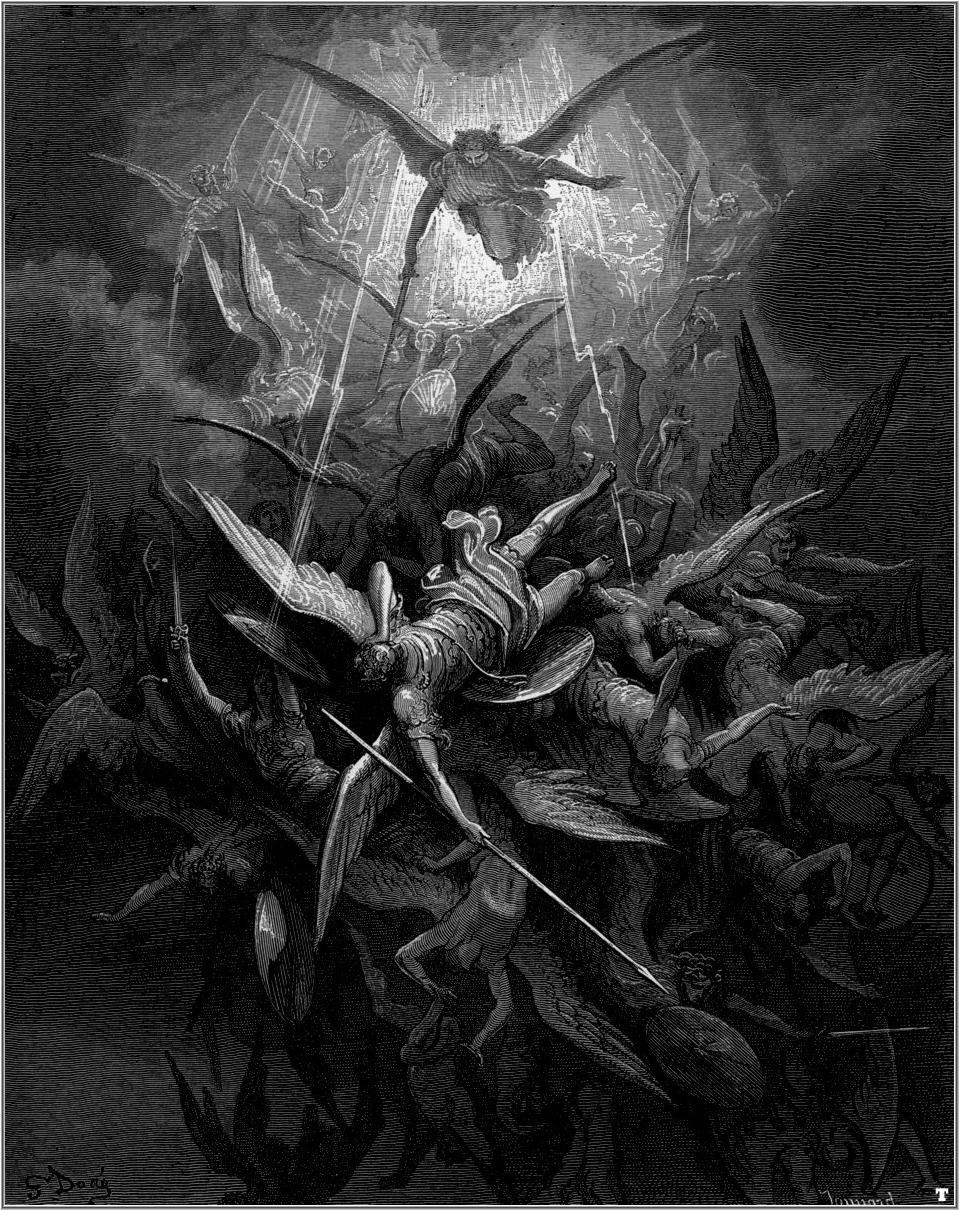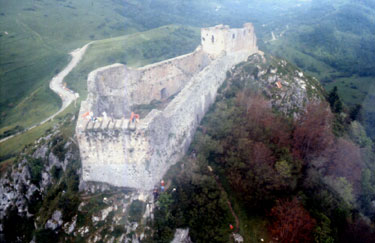|
Raymond De Péreille
Raymond de Péreille (Catalan: Ramon de Perella, Occitan: Raimon de Perelha) was an Occitans, Occitan nobleman who was the lord of the Château de Montségur. Born about 1186, he rebuilt the destroyed castle after 1204. He married in 1222 and resided in the castle together with his cousin Pierre-Roger de Mirepoix who also became his in-law by marrying Philippa, Raymond's daughter, around 1239. Under Raymond's protection, Guilhabert de Castres set up the center of Catharism at Montségur around 1232. The Siege of Montségur, fall of Montségur in 1244 ended organized Cathar activity in the Occitan region. Surviving the end of Montségur he was interrogated by the inquisition in May 1244. See also *Péreille References [...More Info...] [...Related Items...] OR: [Wikipedia] [Google] [Baidu] |
Occitans
The Occitans () are a Romance-speaking ethnic group originating in the historical region of Occitania (southern France, northeastern Spain, and northwestern Italy and Monaco). They have been also called Gascons, Provençals, and Auvergnats.The Occitan members of the Order of Malta were grouped into two tongues, of Provence and Auvergne. The Occitan language Occitan (; ), also known by its native speakers as (; ), sometimes also referred to as Provençal, is a Romance language spoken in Southern France, Monaco, Italy's Occitan Valleys, as well as Spain's Val d'Aran in Catalonia; collectively, ... is still used to varying levels by between 100,000 and 800,000 speakers in southern France and northern Italy. Since 2006, the Occitan language is recognized as one of the Languages of Spain, official languages in Catalonia, an autonomous region of Spain. The Occitans are concentrated in Occitania, but also in large urban centres in neighbouring regions: Lyon, Paris, Turin, an ... [...More Info...] [...Related Items...] OR: [Wikipedia] [Google] [Baidu] |
Château De Montségur
The Château de Montségur (English: Castle of Montsegur; Languedocien: ) is a former fortress near Montségur, a commune in the Ariège department in southern France. Its ruins are the site of a razed stronghold of the Cathars. The present fortress on the site, though described as one of the " Cathar castles," is actually of a later period. It has been listed as a by the French Ministry of Culture since 1862. Geography The ruins of Montségur are perched at a precarious altitude in the south of France near the Pyrenees. Located in the heart of France's Languedoc- Occitanie regions, southwest of Carcassonne, Montségur dominates a rock formation known as a ''pog'' — a term derived from the Languedocien dialect of Occitan — ''puòg'' or ''puèg'', meaning "peak, hill, mountain." The top of the ruin is reached by a path and is 170 m above the road. History The earliest signs of human settlement in the area date back to the Stone Age. Evidence of Roman occupati ... [...More Info...] [...Related Items...] OR: [Wikipedia] [Google] [Baidu] |
Guilhabert De Castres
Guilhabert de Castres (about 1165 – 1240) was a prominent Cathar theologian. Born in Castres, he became a Cathar Perfect and, between 1223 and 1226, Bishop of Toulouse in the Cathar Church. In the theological debates in the early 13th century between the Cathars and the Papal representatives, he presented the Cathar arguments, including at the Debate at Montreal in 1206 and at the last Debate at Pamiers where he encountered Saint Dominic in 1207, prior to the Albigensian Crusades. In 1193, Guilhabert settled in Fanjeaux where he attended to a group of Perfects and believers until Simon de Montfort took the town during the Albigensian Crusade in 1209. Guilhabert withdrew to the Château de Montségur and ministered from its safety. In 1222, Guilhabert escaped from Castelnaudary that was besieged by Amaury VI of Montfort. Five years later, during a respite in the war, he presided over the Cathar synod at the Château de Pieusse where about a hundred Perfects had assembled. During ... [...More Info...] [...Related Items...] OR: [Wikipedia] [Google] [Baidu] |
Catharism
Catharism ( ; from the , "the pure ones") was a Christian quasi- dualist and pseudo-Gnostic movement which thrived in Southern Europe, particularly in northern Italy and southern France, between the 12th and 14th centuries. Denounced as a heretical sect by the Catholic Church, its followers were attacked first by the Albigensian Crusade and later by the Medieval Inquisition, which eradicated the sect by 1350. Around 1 million were slaughtered, hanged, or burnt at the stake. Followers were known as Cathars or Albigensians, after the French city Albi where the movement first took hold, but referred to themselves as Good Christians. They famously believed that there were not one, but two Godsthe good God of Heaven and the evil god of this age (). According to tradition, Cathars believed that the good God was the God of the New Testament faith and creator of the spiritual realm. Many Cathars identified the evil god as Satan, the master of the physical world. The Cathars believe ... [...More Info...] [...Related Items...] OR: [Wikipedia] [Google] [Baidu] |
Siege Of Montségur
The siege of Montségur (May 1243 – 16 March 1244) was a siege that took place during the Albigensian Crusade. It pitted the royal forces of Louis IX of France and those of the bishops of Albi and Narbonne against the forces of Pierre Roger de Mirepoix, who protected a community of Cathars in Montségur. The castle surrendered after a nine-month siege. About 210 and unrepentant were burned in a bonfire at the foot of the mountain on 16 March 1244. Background Although the Albigensian Crusade had been concluded with the Treaty of Paris-Meaux in 1229, local resistance continued. The Cathar Church was still able to operate and oppose the Inquisition that pervaded the Languedoc. In 1233, the Cathar Bishop Guilhabert de Castres asked Raymond de Pereille for permission to make Montségur "the seat and head" () of the Cathar Church. As a haven for Cathars, Montségur gained symbolic and strategic importance in the resistance fight against the Catholic Church and the French forces ... [...More Info...] [...Related Items...] OR: [Wikipedia] [Google] [Baidu] |
Inquisition
The Inquisition was a Catholic Inquisitorial system#History, judicial procedure where the Ecclesiastical court, ecclesiastical judges could initiate, investigate and try cases in their jurisdiction. Popularly it became the name for various medieval and reformation-era state-organized tribunals whose aim was to combat Christian heresy, heresy, apostasy, blasphemy, witchcraft, and customs considered to be Deviance (sociology), deviant, using this procedure. Violence, isolation, torture or the threat of its application, have been used by the Inquisition to extract confessions and denunciations. Studies of the records have found that the overwhelming majority of sentences consisted of penances, but convictions of unrepentant heresy were handed over to the secular courts for the application of local law, which generally resulted in execution or life imprisonment. Inquisitions with the aim of combatting religious sedition (e.g. apostasy or heresy) had their start in the Christianity ... [...More Info...] [...Related Items...] OR: [Wikipedia] [Google] [Baidu] |
Péreille
Péreille (; ) is a commune in the Ariège department in southwestern France. Population Inhabitants are called ''Péreilleois''. See also *Communes of the Ariège department *Raymond de Péreille Raymond de Péreille (Catalan: Ramon de Perella, Occitan: Raimon de Perelha) was an Occitans, Occitan nobleman who was the lord of the Château de Montségur. Born about 1186, he rebuilt the destroyed castle after 1204. He married in 1222 and res ... References Communes of Ariège (department) Ariège communes articles needing translation from French Wikipedia {{Ariège-geo-stub ... [...More Info...] [...Related Items...] OR: [Wikipedia] [Google] [Baidu] |
People Of The Albigensian Crusade
The term "the people" refers to the public or common mass of people of a polity. As such it is a concept of human rights law, international law as well as constitutional law, particularly used for claims of popular sovereignty. In contrast, a people is any plurality of persons considered as a whole. Used in politics and law, the term "a people" refers to the collective or community of an ethnic group or nation. Concepts Legal Chapter One, Article One of the Charter of the United Nations states that "peoples" have the right to self-determination. Though the mere status as peoples and the right to self-determination, as for example in the case of Indigenous peoples (''peoples'', as in all groups of indigenous people, not merely all indigenous persons as in ''indigenous people''), does not automatically provide for independent sovereignty and therefore secession. Indeed, judge Ivor Jennings identified the inherent problems in the right of "peoples" to self-determination, as i ... [...More Info...] [...Related Items...] OR: [Wikipedia] [Google] [Baidu] |



